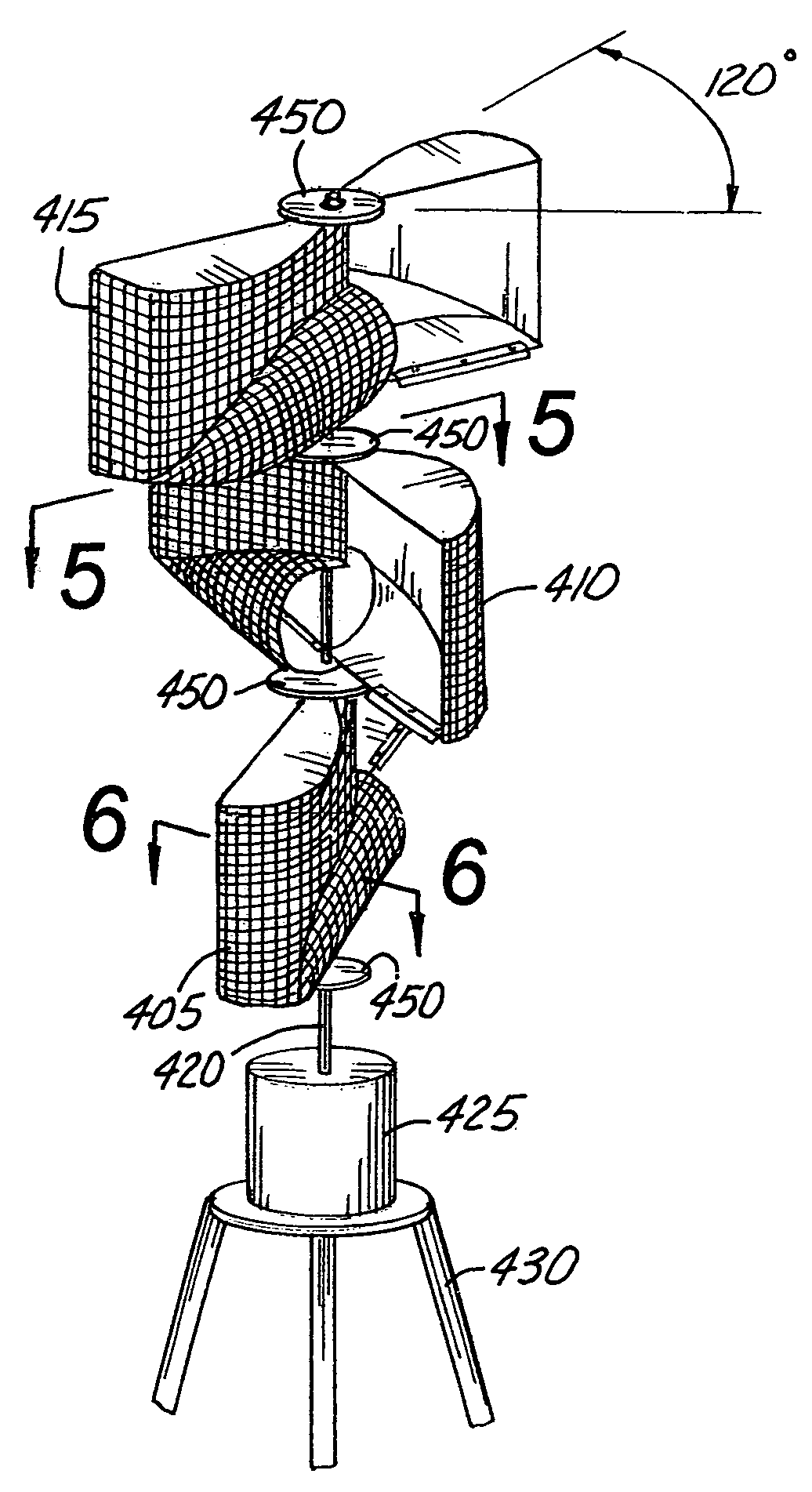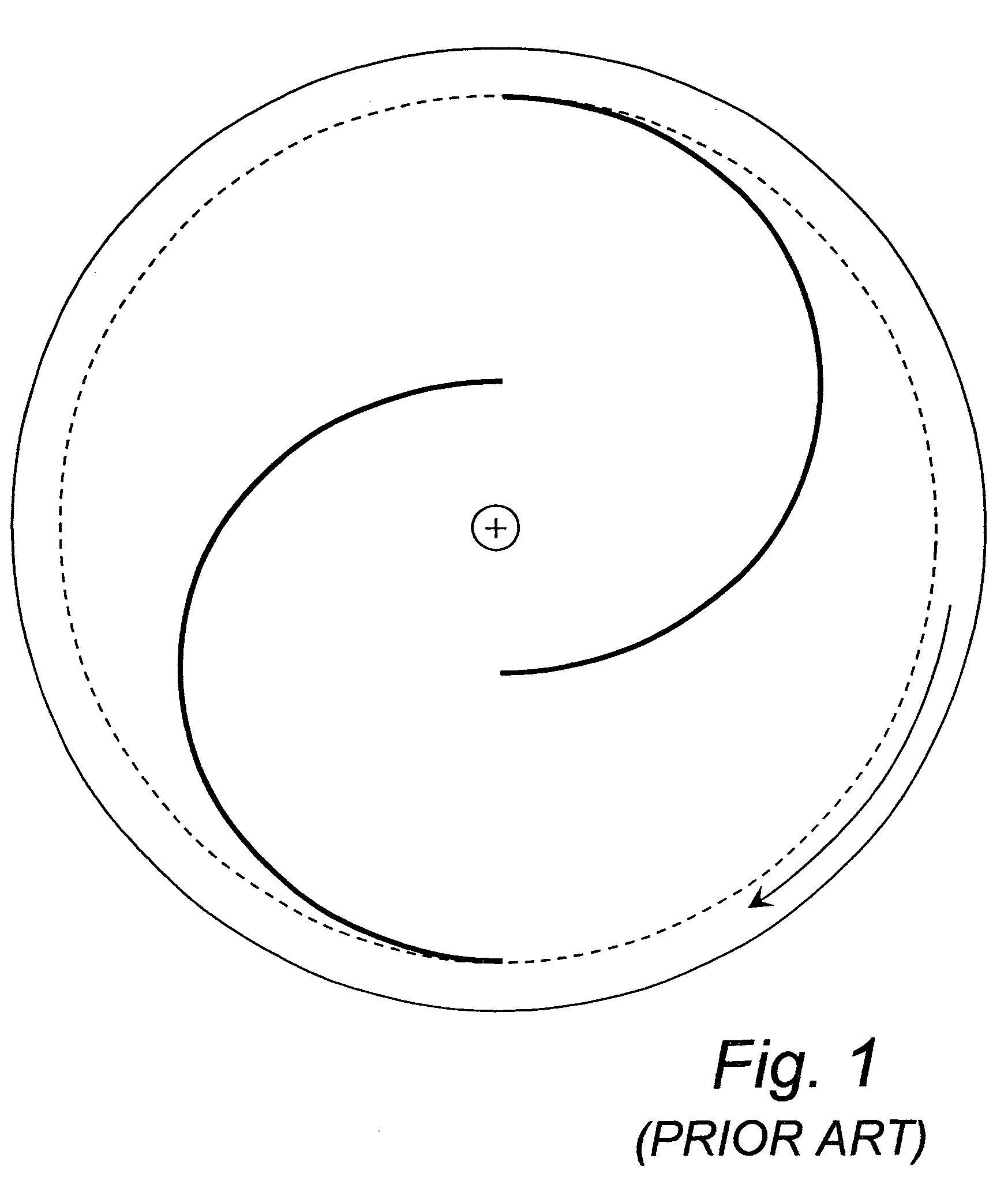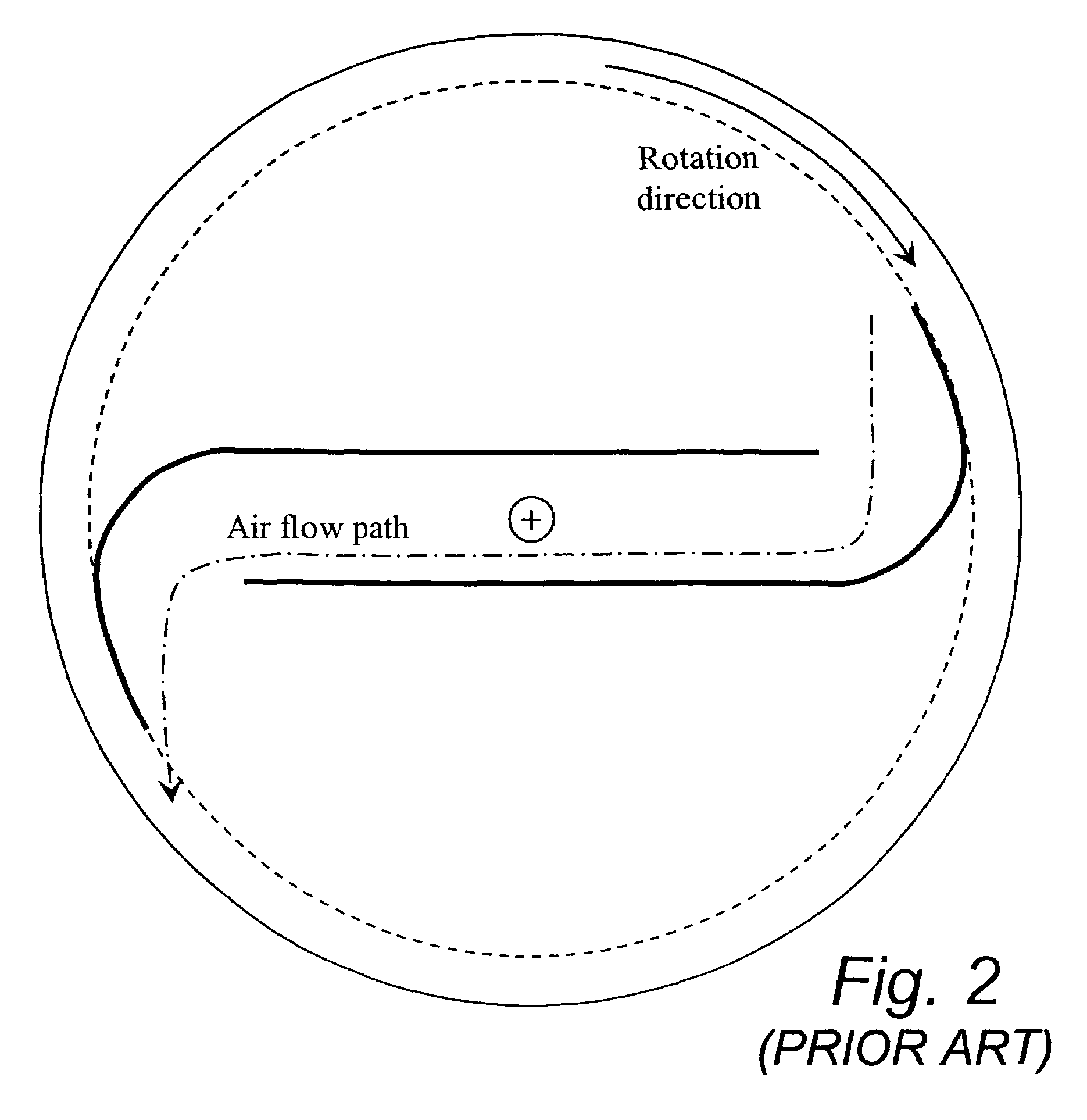Modified Savonius rotor
a rotor and wind turbine technology, applied in the direction of wind motors with perpendicular air flow, liquid fuel engine components, non-positive displacement fluid engines, etc., can solve the problems of low efficiency of savonius rotor, no prior art discloses exhaust ports, and no prior art discloses the use of savonius rotor vanes as a surfa
- Summary
- Abstract
- Description
- Claims
- Application Information
AI Technical Summary
Benefits of technology
Problems solved by technology
Method used
Image
Examples
first embodiment
[0049]A set of three (3) modified Savonius rotors 405, 410, 415 are shown stacked vertically in FIG. 4 in a rotor assembly 400 in the invention. By angling the “S” shaped vanes differently for each set (in this case 120° apart), automatic startup is assured because at least one rotor will be turned such that the change in momentum of the wind will cause the assembly to turn. The set of modified Savonius rotors 405, 410, 415 in the assembly 400 are rigidly affixed to a shaft 420 which rotates as the modified Savonius rotors 405, 410, 415 rotate. A bearing (not shown) at a lower end of the shaft 420 provides reduced friction rotation. Via the shaft 420, power is transmitted to a power converting device 425 such as an electrical generator, an air compressor, pump, etc. An advantage of the Savonius rotor over horizontal-shaft wind turbines is the ability to locate the power converting device 425 at or near ground level where it is accessible for installation, maintenance, repair, and in...
second embodiment
[0064]the present invention is shown in FIG. 18 wherein larger support plates 1810 are used in place of the smaller support plates 450 shown in FIGS. 4 and 5 and no photovoltaic cells are utilized. In this preferred embodiment, each support plate 1810 is attached to the top flange 510 and bottom flange 610 by bolts or rivets as shown. Other possibilities for adjoining a support plate 1810 and a vane 710 are by adhesive or combining the top and bottom flanges 510, 610 into one support plate 1810.
[0065]The view shown in FIG. 19 is similar to that of FIG. 6 with the addition of the larger support plate 1810 and the absence of solar collecting material. Again, a metallic edge 1910 is provided on the leading edge of the bottom flange 610. A detail of a cross section of the vane 710 and metallic edge 1910 is shown in FIG. 20. The metallic edge 1910 has a sharpened leading edge to reduce the disturbance to the boundary layer of the flow over the support plate 1910 and bottom flange 610.
[00...
third embodiment
[0071]the modified Savonius rotor assembly 400 is shown in FIG. 28 wherein the assembly shown in FIG. 18 is outfitted with the addition of a cone-shaped solar collector 2810 at its top. Separate isosceles triangular sections 2820 of photovoltaic solar cells are creased so as to have a ridge running from the top apex to the base. These individual triangular sections 2820 are adjoined to produce the cone shape. As shown, the cone has an included angle of 120°.
PUM
 Login to View More
Login to View More Abstract
Description
Claims
Application Information
 Login to View More
Login to View More - R&D
- Intellectual Property
- Life Sciences
- Materials
- Tech Scout
- Unparalleled Data Quality
- Higher Quality Content
- 60% Fewer Hallucinations
Browse by: Latest US Patents, China's latest patents, Technical Efficacy Thesaurus, Application Domain, Technology Topic, Popular Technical Reports.
© 2025 PatSnap. All rights reserved.Legal|Privacy policy|Modern Slavery Act Transparency Statement|Sitemap|About US| Contact US: help@patsnap.com



